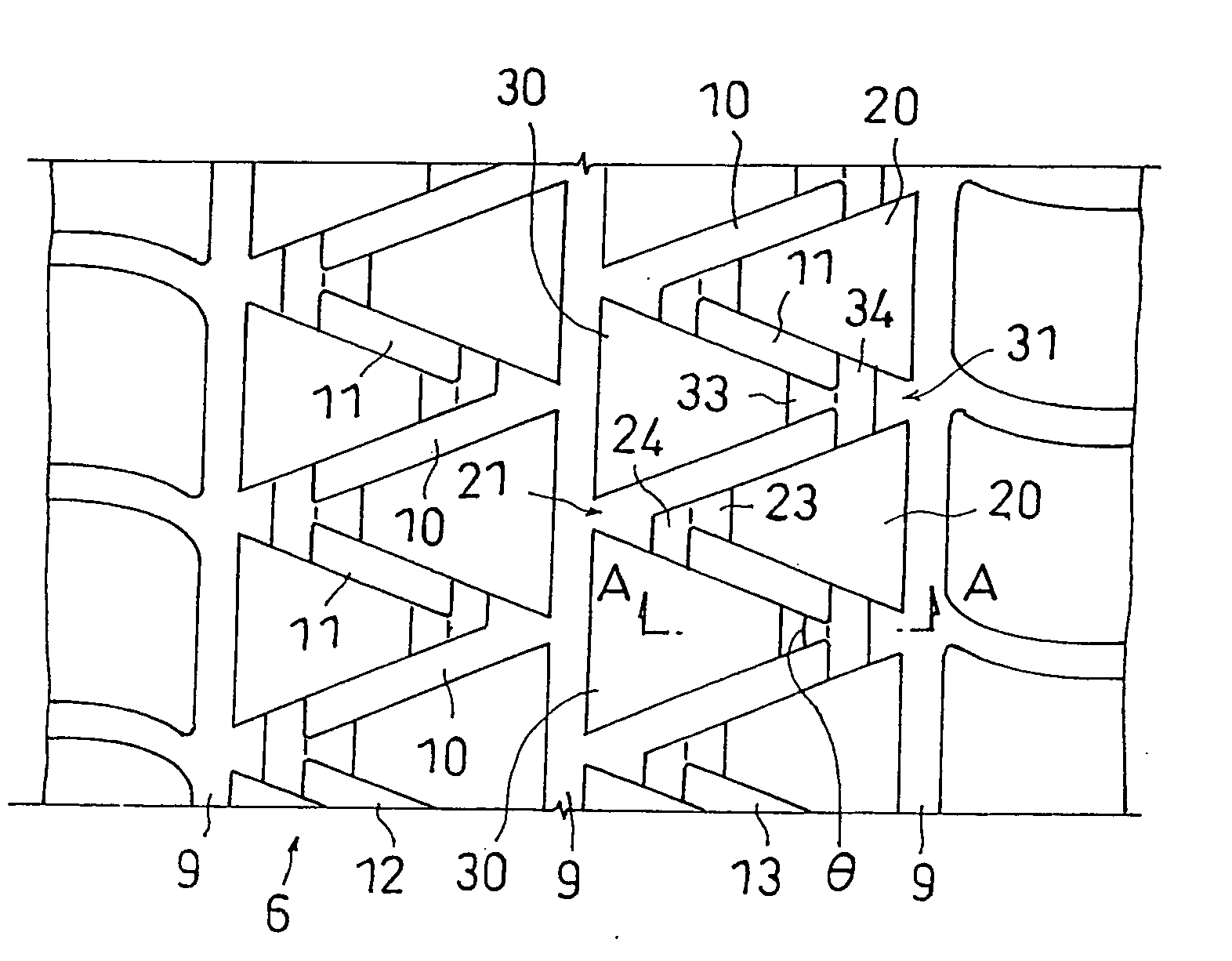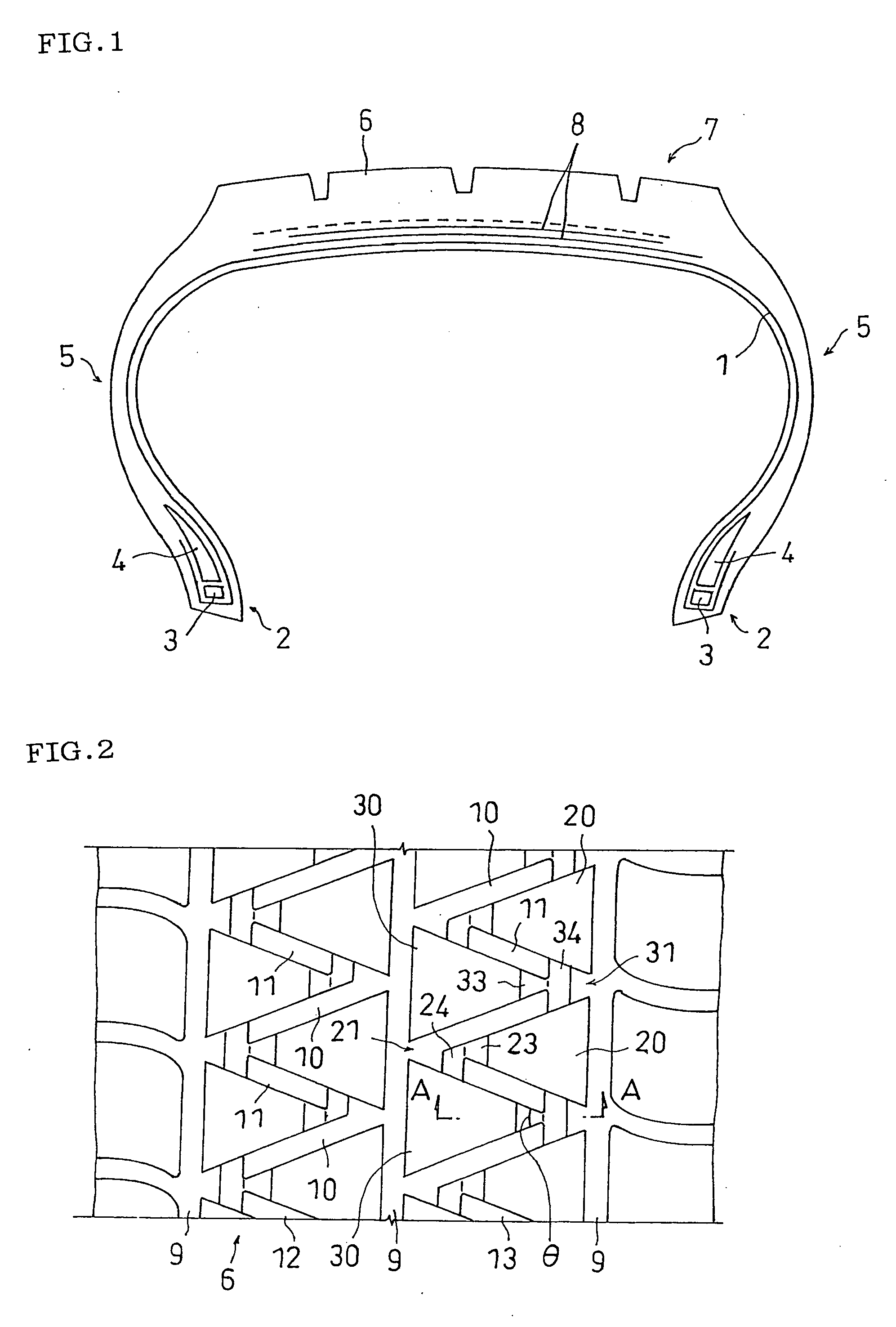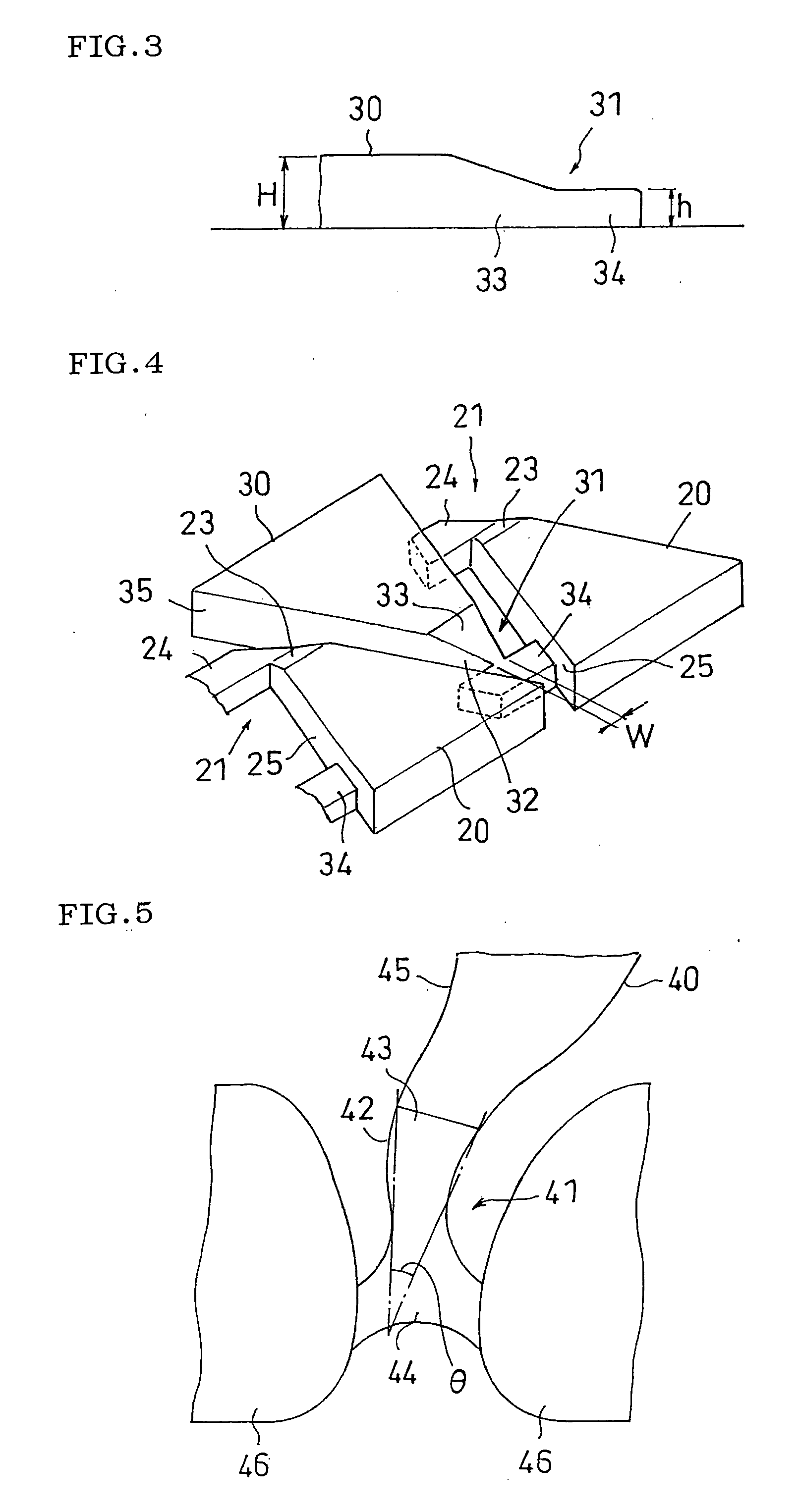Pneumatic tire
a technology of pneumatic tires and slits, which is applied in the direction of vehicle components, non-skid devices, transportation and packaging, etc., can solve the problems of large space provided between the slits, inability to prevent deviated wear from being generated, and easy generation of deviated wear along the circumferential direction of the tire in this region. to achieve the effect of preventing deviated wear
- Summary
- Abstract
- Description
- Claims
- Application Information
AI Technical Summary
Benefits of technology
Problems solved by technology
Method used
Image
Examples
examples
[0043] Next, to concretely show the structure and the effect of the present invention, the deviated wear resistance was evaluated. This evaluation will be explained below.
[0044] First, test tires of the following examples of the invention (tire size: LT265 / 75R166PR) were prepared, the tread surface of each tire was allowed to become worn equally in the circumferential direction of the tire until the height of the taper cut portion became half. Then, the test tires were mounted on an actual vehicle (4800cc four-wheel drive vehicle, and two passengers rode), air pressure was 350 kPa, and the vehicle was allowed to run 12,000 km through general road. After the running, an amount of step of every block generated due to wear was measured, and the deviated wear resistance was evaluated. Two tires were prepared for each specification.
examples 1 and 2
[0046] As shown in FIGS. 2 to 4, test tires were prepared as the examples 1 and 2 of the invention. The test tires are the same as those of the comparative example except that the tread surface is formed with a block line comprising blocks formed at their tip ends with taper cut portions and bridge portions. The land portion height of the bridge portion is 25% of the land portion height of the block. In the example 1, the block formed on the tread surface is connected to a sidewall surface located one of sides of the tip end like the block 20 shown in FIGS. 2 and 4. In the example 2, the block formed on the tread surface is connected to the sidewall surfaces located on both sides of the tip end like the block 30 shown in FIGS. 2 to 4.
[0047] A result of evaluation is shown in Table 1.
TABLE 1Amount of step (mm)MinimumMaximumBridge portionvaluevalueComparativeNo bridge portion1.62.0ExampleExample 1Bridge portion is0.91.4connected to sidewallsurface on one sideExample 2Bridge portion...
PUM
 Login to View More
Login to View More Abstract
Description
Claims
Application Information
 Login to View More
Login to View More - R&D
- Intellectual Property
- Life Sciences
- Materials
- Tech Scout
- Unparalleled Data Quality
- Higher Quality Content
- 60% Fewer Hallucinations
Browse by: Latest US Patents, China's latest patents, Technical Efficacy Thesaurus, Application Domain, Technology Topic, Popular Technical Reports.
© 2025 PatSnap. All rights reserved.Legal|Privacy policy|Modern Slavery Act Transparency Statement|Sitemap|About US| Contact US: help@patsnap.com



